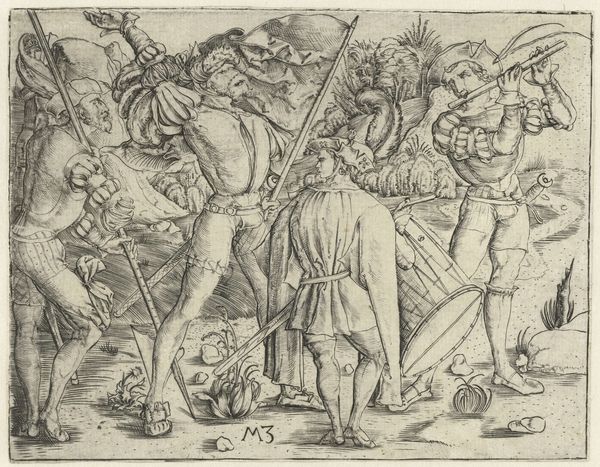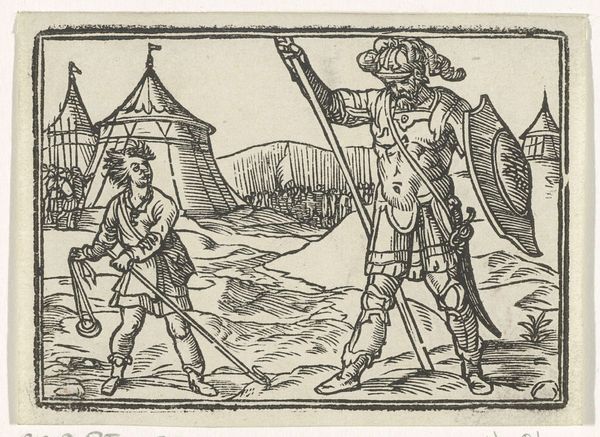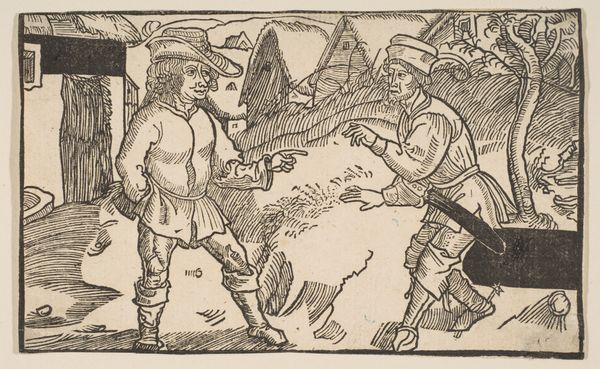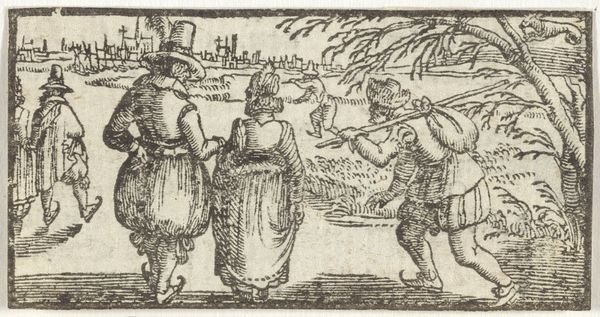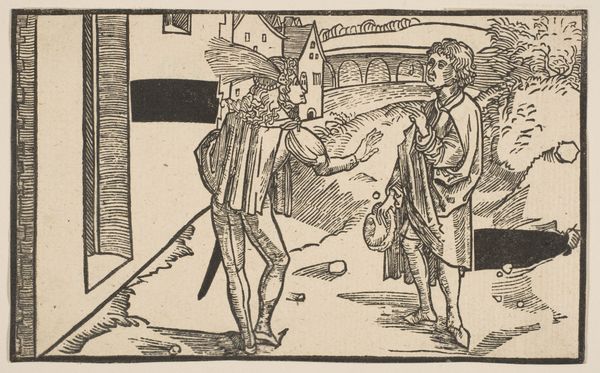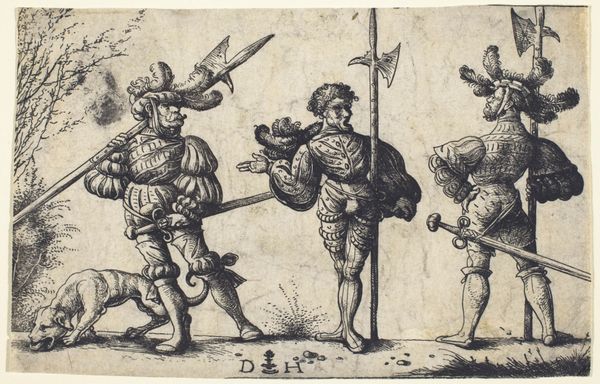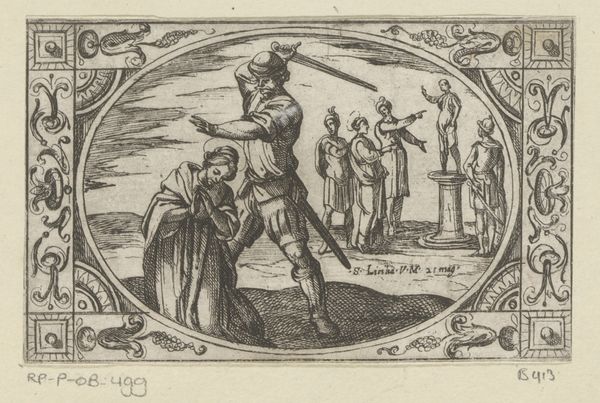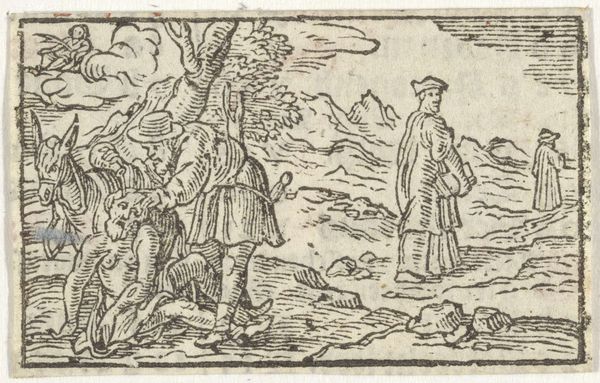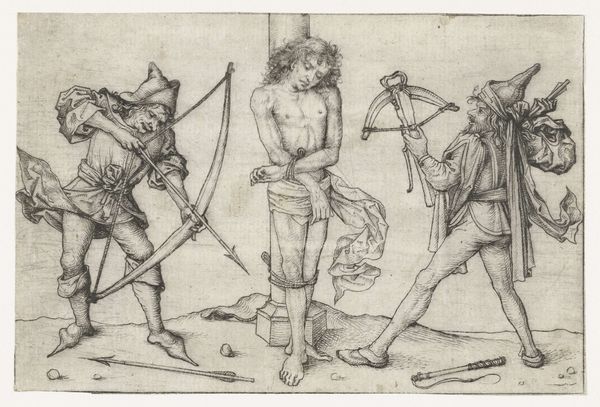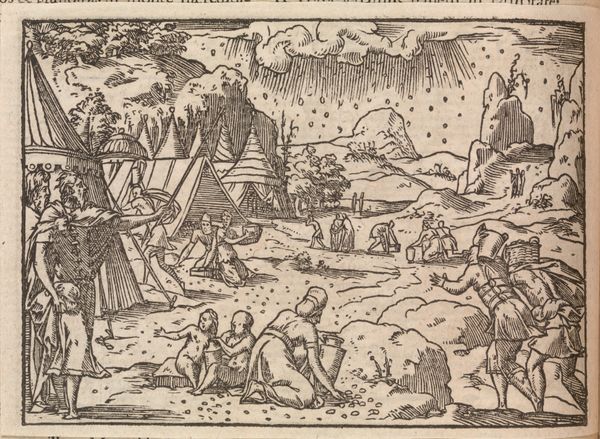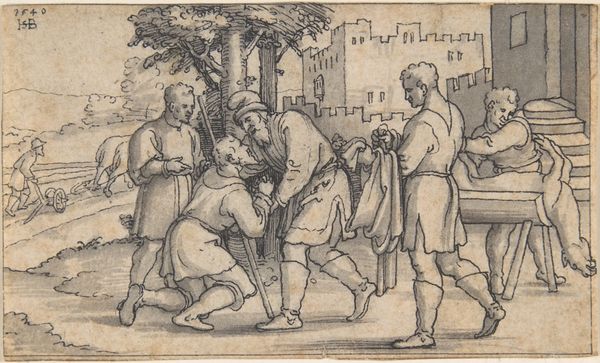
Heauton Timouroumenos, from The Comedies of Terence, 19th century reprint 1485 - 1528
0:00
0:00
drawing, print
#
drawing
#
comic strip sketch
# print
#
pen illustration
#
pen sketch
#
junji ito style
#
personal sketchbook
#
ink drawing experimentation
#
pen-ink sketch
#
men
#
pen work
#
sketchbook drawing
#
sketchbook art
Dimensions: sheet: 3 1/2 x 5 5/8 in. (8.9 x 14.3 cm)
Copyright: Public Domain
Curator: What a wonderfully crisp impression. The lines are so precise, the texture almost tangible. Editor: Indeed. And despite its small scale, there’s a striking sense of drama, don't you think? Almost theatrical, or like a still from an early film. Curator: That’s perceptive. What we’re looking at is a woodcut from a 19th-century reprint of "The Comedies of Terence," specifically illustrating "Heauton Timouroumenos" – which translates, rather morbidly, to "The Self-Tormentor". These illustrations are after designs attributed to Albrecht Dürer, though this particular reprint dates much later, between 1485 and 1528, according to the Met's records. Editor: Right, so these images would have been incredibly influential in disseminating classical texts and ideas. I mean, imagine seeing this centuries ago, when the cost of commissioning such work would be astronomical. It speaks volumes about the growth of a visual culture in the period, this distribution of images among larger and larger audiences. Curator: Precisely. Look at the meticulousness with which the artist has rendered the costumes, for instance. Consider the cultural value then assigned to craftsmanship to make works of such visual and tactile density. One might spend an age decoding their meaning in sartorial terms. Editor: Yes, it's fascinating to consider how these illustrations served a didactic function, popularizing classical stories while simultaneously reflecting the material conditions of their production and circulation. The choice of printmaking itself facilitated this wider reach. And you get a sense of how such a volume would cement classical sources as cornerstones of later European elite identity. Curator: Absolutely. It’s an intricate dance between art, labor, and commerce. This isn't merely about the final image but the complex network of artisans, publishers, and consumers involved in its creation and distribution. Editor: Looking at this reprint offers us an important vantage point. The image bears traces of its journey. It brings a sharp focus to thinking about what the continued existence of artworks within social and political processes can show us about art today. Curator: A perfect final reflection. By closely analyzing their manufacture, this opens so many doors into other perspectives for interpretation.
Comments
No comments
Be the first to comment and join the conversation on the ultimate creative platform.
